Pumapunku is part of a large temple
complex or monument group that is part of the Tiwanaku Site near
Tiwanaku, Bolivia. Tiwanaku is significant in Incan traditions
because it is believed to be the site where the world was
created. In Aymara, Puma Punku's name means "The Door of the
Puma". The Pumapunku complex consists of an unwalled western
court, a central unwalled esplanade, a terraced platform mound
that is faced with megalithic stone, and a walled eastern court.
The Pumapunku is a terraced earthen mound that is faced with
megalithic blocks. It is 167.36 meters wide along its north-south
axis and 116.7 meters long along its east-west axis. On the
northeast and southeast corners of the Pumapunku it has 20-meter
wide projections that extend 27.6 meters north and south from the
rectangular mound. The eastern edge of the Pumapunku is occupied
by what is called the "Plataforma Lítica." The
Plataforma Lítica consists of a stone terrace that is 6.75 by
38.72 meters in dimension. This terrace is paved with multiple
enormous stone blocks. The Plataforma Lítica contains the
largest stone slab found in both the Pumapunku and Tiwanaku Site.
This stone slab is 7.81 meters long, 5.17 meters wide and
averages 1.07 meters thick. Based upon the specific gravity of
the red sandstone from which it was carved, this stone slab has
been estimated to weigh 131 metric tons.[5] The other stonework
and facing of the Pumapunku consists of a mixture of andesite and
red sandstone. The core of the Pumapunku consists of clay. The
fill underlying selected parts of the edge of the Pumapunku
consists of river sand and cobbles instead of clay. Excavations
at the Pumapunku have documented “three major building
epochs, in addition to small repairs and remodeling.”
Click on the
picture to get a large version
| As they think it
looked like |
 |
| Some
of the left stones have an impressive size |
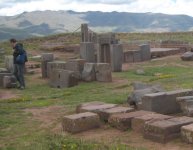 |
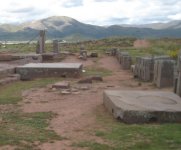 |
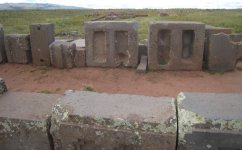 |
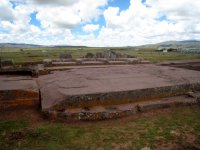 |
 |
| and
here are some smaller details |
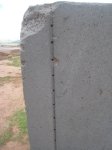 |
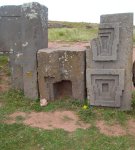 |
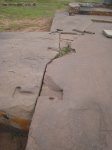 |
 |
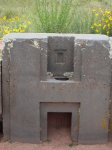 |
< Back to the index

